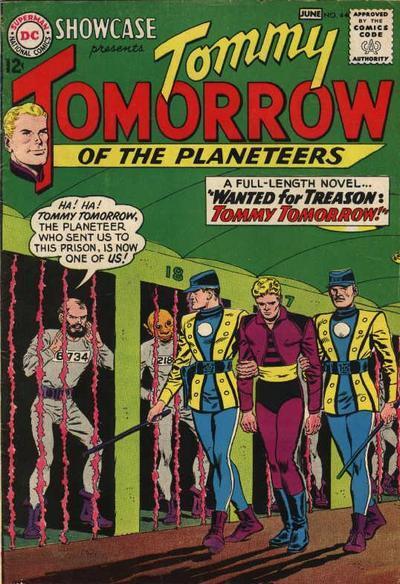Seventy six years ago this month, on August 10, 1936, the small town of Shelby, North Carolina coped with a muggy Monday morning. My dad, Grady Mauney, then 16 years old, and his best friend, George Watson, sat on the front porch of the Mauney home on North Lafayette Street. They started talking about how fun it might be to go to the Texas Centennial Exposition, in Dallas, Texas that year. But, that was a long way from Shelby! “Wonder how long it would take us to thumb rides to Dallas?” they asked themselves.
Before they realized what they were doing, Grady and George had both scraped together a little money, packed a bag, and found themselves hitchhiking their way to Texas. Grady chronicled his journey in a series of postcards sent home from the road. Oh, one other thing, Grady left town without telling his parents! The two would-be adventurers simply left a note at the drugstore where they had been working that they were headed to the Texas Centennial.
Grady’s first postcard was addressed to his mother, postmarked Royston, Georgia, 4:30 p.m., August 10, 1936. My dad’s sister told me that she always heard that my grandmother, Macy, spent three days holed up in a closet, worried about her son.
Dear Mother,
I thought if I told you that I was going to Texas, you wouldn’t let me so I didn’t tell you. I got $25.00 and I am now in a little town in Georgia. It is 4:00 and we have already come nearly 200 miles. We are going to stay in Atlanta, GA, with George’s sister tonite. I will write you along.
Grady, Jr.
The next day, Grady wrote that it was Tuesday morning and that they had stayed with George’s brother in Atlanta, but had decided to stay for the day and tour around the area. They hoped to make it to Texas by Saturday.
On Wednesday, August 12, Grady sent another note to his mother, postmarked Lanette, Alabama.
Dear Mother,
We just arrived in Lanette, Alabama. It is 10:30 Wed. morning. We have got a ride into Montgomery, Alabama. We spent the day with George’s brother in Atlanta Monday and Tuesday. It is a lot of fun riding with a traveling salesman in a big car. We have had lots of luck. We looked over Atlanta yesterday. It is about three times larger than Charlotte.
Grady, Jr.
Grady further wrote that they stayed in Montgomery, the capital of Alabama, and expected to cross the Mississippi River the next day. On Thursday, August 13, Grady sent a postcard from Jackson, Mississippi, reporting that they had stayed in a hotel in Jackson, having traveled about 250 miles that day. They still expected to arrive in Dallas by Saturday and anticipated it would be August 25 before they returned home.
On Friday, August 14, my dad sent a postcard from Vicksburg, Mississippi, addressed to his father, R.G. Mauney, in care of A. Blanton Company in Shelby, North Carolina. He said he was having lots of fun and that he “might go on to California if my money holds out. I bet Mother is cussing because I left.” The cost of the postage stamp was 1 cent. That same day, Grady sent a separate postcard to his mother.
Dear Mother,
I am in Vicksburg, Miss., getting ready to cross the Mississippi River. Getting nearer to Dallas, Texas. I still got about $25.00.
While most of the postcards were sent to his mother, Grady also wrote his younger brother and sister, Charles and Martha: “I am having a good time hitchhiking it. We hadn’t had to stand on the road over 10 minutes before we caught a ride. It is lots of fun thumbing a ride. We will be in Texas by Saturday.”
My mom recalls my dad saying that one night they stayed in a Hooverville, the name given for shanty towns built by homeless people during the Great Depression. If that was the case, such was not documented in his postcards. Maybe he didn’t want to worry his already distraught mother!
As they neared Dallas, they became more anxious to arrive and caught a bus from Greenwood, Mississippi to Dallas. “It is costing us a good much but we wanted to get in Dallas tonite.”
Grady and George arrived in Dallas on Saturday night, August 16, 1936, six days after they left Shelby. The next morning, he wrote a letter home to his mother and father.
Dear Mother and Daddy,
We arrived in Dallas last nite. We had to ride a bus from Greenwood because we wanted to get in here before Sunday. We got up this morning early and went to the fair and stayed all day. We got enough of this place so we are leaving for home in the morning. The Centennial sure is a big fair. They say it is bigger and better than the World’s Fair was. It cost over 6 million of dollars to build it. Dallas is about three times larger than Charlotte.
Well I will tell you about our trip out here. Monday we caught a ride from Shelby to Spartanburg and from Spartanburg to Royston, GA. From Royston to Athens, GA, from Athens to Atlanta, and stayed in Atlanta with George’s brother for the nite. The next day we stayed in Atlanta which is about three times as large as Charlotte, and let George’s brother show us over the town. We saw lots of interesting things there but I will wait until I get home. So it was Wednesday before we started on the road again. We came 170 miles Wed. and stayed at Montgomery, the capital of Alabama. Thursday we came 233 miles and stayed in Jackson, the capital of Mississippi that nite. Friday we came 171 miles and stayed in a little town named Ruston. Saturday we came 290 miles.
Each nite after we get our room, we would take a bath and go to the picture show. The next morning we’d get up about 8:30 and start hitch-hiking.
We have had lots of fun but we are ready to come home. We will be there by Saturday.
We have ridden in all kinds of cars. I will tell you more about the fair and our trip when I get home.
Grady, Jr.
This final letter was postmarked Dallas, Texas, August 17 at 10:30 a.m. The envelope was from the New Dallas Hotel, 310 South Ervay Street.
According to Google Maps, traveling their likely route, the journey would be 1,014 miles. By today’s standards, that’s about a 17-hour drive. Grady’s estimate of the miles they traveled was 1,063, which is remarkably close to Google’s estimate. He must have asked each driver to keep track of how many miles they had driven that day.
The Texas Centennial Exposition lasted six months and attracted over 6 million visitors. I suspect none of them had more fun than those two teenage boys from Shelby, North Carolina.
















